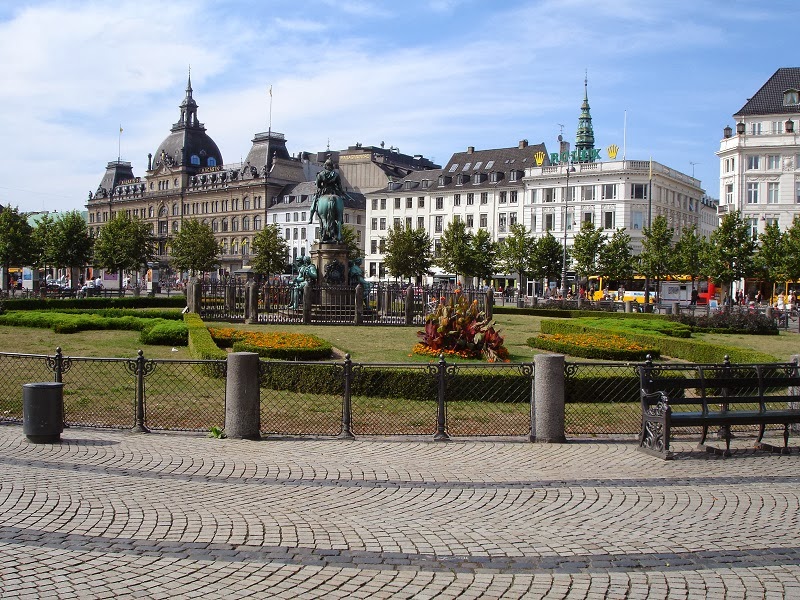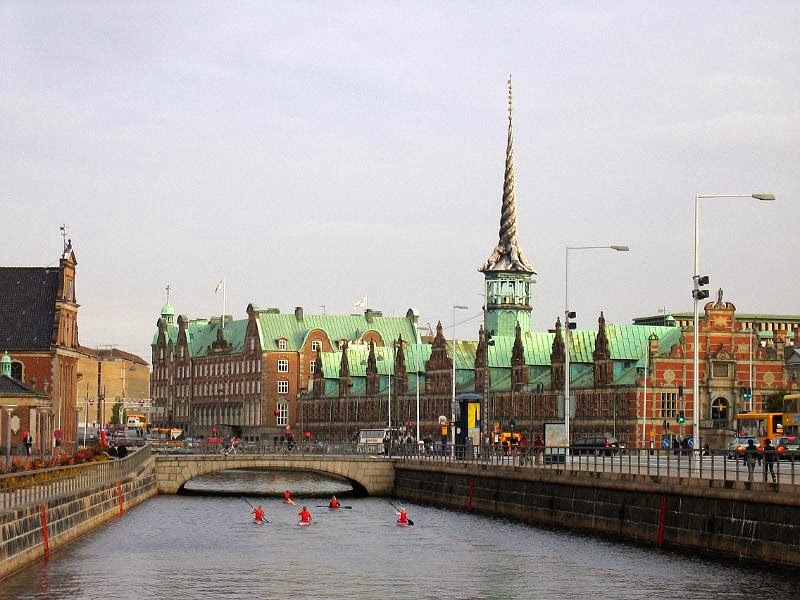Copenhagen is the capital and most populous city of Denmark, with an urban population of 1,230,728 and a metropolitan population of 1,967,727 (as of 1 October 2013). Copenhagen is situated on the eastern coast of Zealand, 42 km (26 mi) northwest of Malmö, Sweden and 164 km (102 mi) northeast of Odense. The city stretches across parts of the island of Amager and also contains the enclave of Frederiksberg, a municipality in its own right.

Originally a Viking fishing village founded in the 10th century, Copenhagen became the capital of Denmark in the early 15th century. During the 17th century, under the reign of Christian IV, it developed into an important regional centre, consolidating its position as capital of Denmark and Norway with its institutions, defences and armed forces. After suffering from the effects of plague and fire in the 18th century, the city underwent a period of redevelopment which included the prestigious district of Frederiksstaden and cultural institutions such as the Royal Theatre and the Royal Academy of Fine Arts. After further disasters in the early 19th century when Nelson attacked the Danish fleet and bombarded the city, there was a surprising recovery with the advent of the Danish Golden Age, bringing a Neoclassical look to Copenhagen's architecture. From the 1880s, after its ramparts were flattened, the city experienced a major expansion into the surrounding areas with housing for all those who came in from the provinces to participate in the area's industrial growth.

One of the most significant developments of the 20th century was the implementation of the Finger Plan immediately after the Second World War, fostering the creation of housing and businesses along the five urban railway routes stretching out from the city centre. Since the turn of the millennium, Copenhagen has seen strong urban and cultural development, facilitated by investment in its institutions and infrastructure.

Today the city is the cultural, economic and governmental centre of Denmark and one of the major financial centres of Northern Europe with the Copenhagen Stock Exchange. Since the completion of the Øresund Bridge, the metropolitan area of Copenhagen has become increasingly integrated with the Swedish province of Scania and its largest city, Malmö. The combined area is known as the Øresund Region. With a number of bridges connecting the various districts, the cityscape is characterized by parks, promenades and waterfronts.


What To See

Originally a Viking fishing village founded in the 10th century, Copenhagen became the capital of Denmark in the early 15th century. During the 17th century, under the reign of Christian IV, it developed into an important regional centre, consolidating its position as capital of Denmark and Norway with its institutions, defences and armed forces. After suffering from the effects of plague and fire in the 18th century, the city underwent a period of redevelopment which included the prestigious district of Frederiksstaden and cultural institutions such as the Royal Theatre and the Royal Academy of Fine Arts. After further disasters in the early 19th century when Nelson attacked the Danish fleet and bombarded the city, there was a surprising recovery with the advent of the Danish Golden Age, bringing a Neoclassical look to Copenhagen's architecture. From the 1880s, after its ramparts were flattened, the city experienced a major expansion into the surrounding areas with housing for all those who came in from the provinces to participate in the area's industrial growth.

One of the most significant developments of the 20th century was the implementation of the Finger Plan immediately after the Second World War, fostering the creation of housing and businesses along the five urban railway routes stretching out from the city centre. Since the turn of the millennium, Copenhagen has seen strong urban and cultural development, facilitated by investment in its institutions and infrastructure.

Today the city is the cultural, economic and governmental centre of Denmark and one of the major financial centres of Northern Europe with the Copenhagen Stock Exchange. Since the completion of the Øresund Bridge, the metropolitan area of Copenhagen has become increasingly integrated with the Swedish province of Scania and its largest city, Malmö. The combined area is known as the Øresund Region. With a number of bridges connecting the various districts, the cityscape is characterized by parks, promenades and waterfronts.




0 comments:
Post a Comment